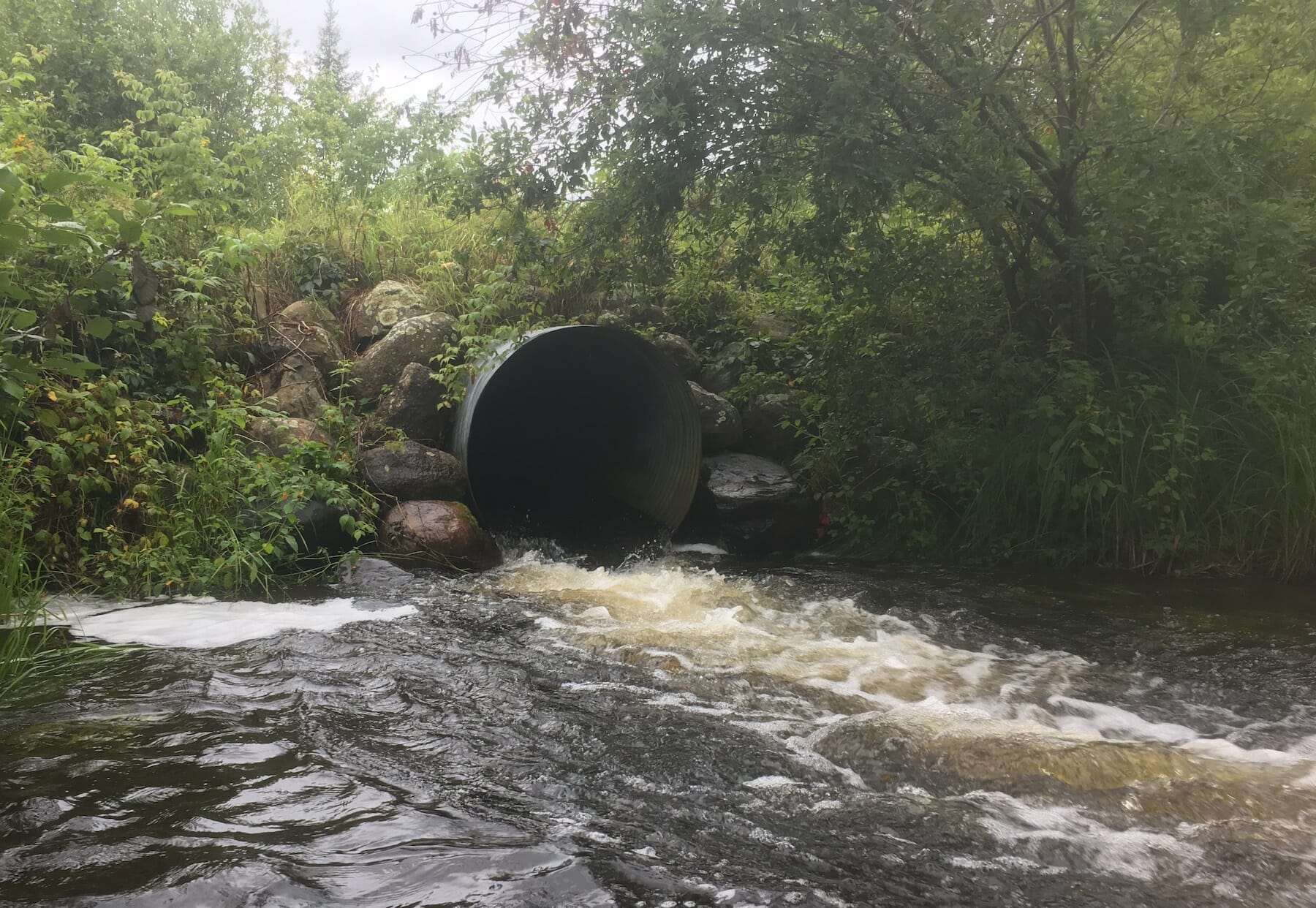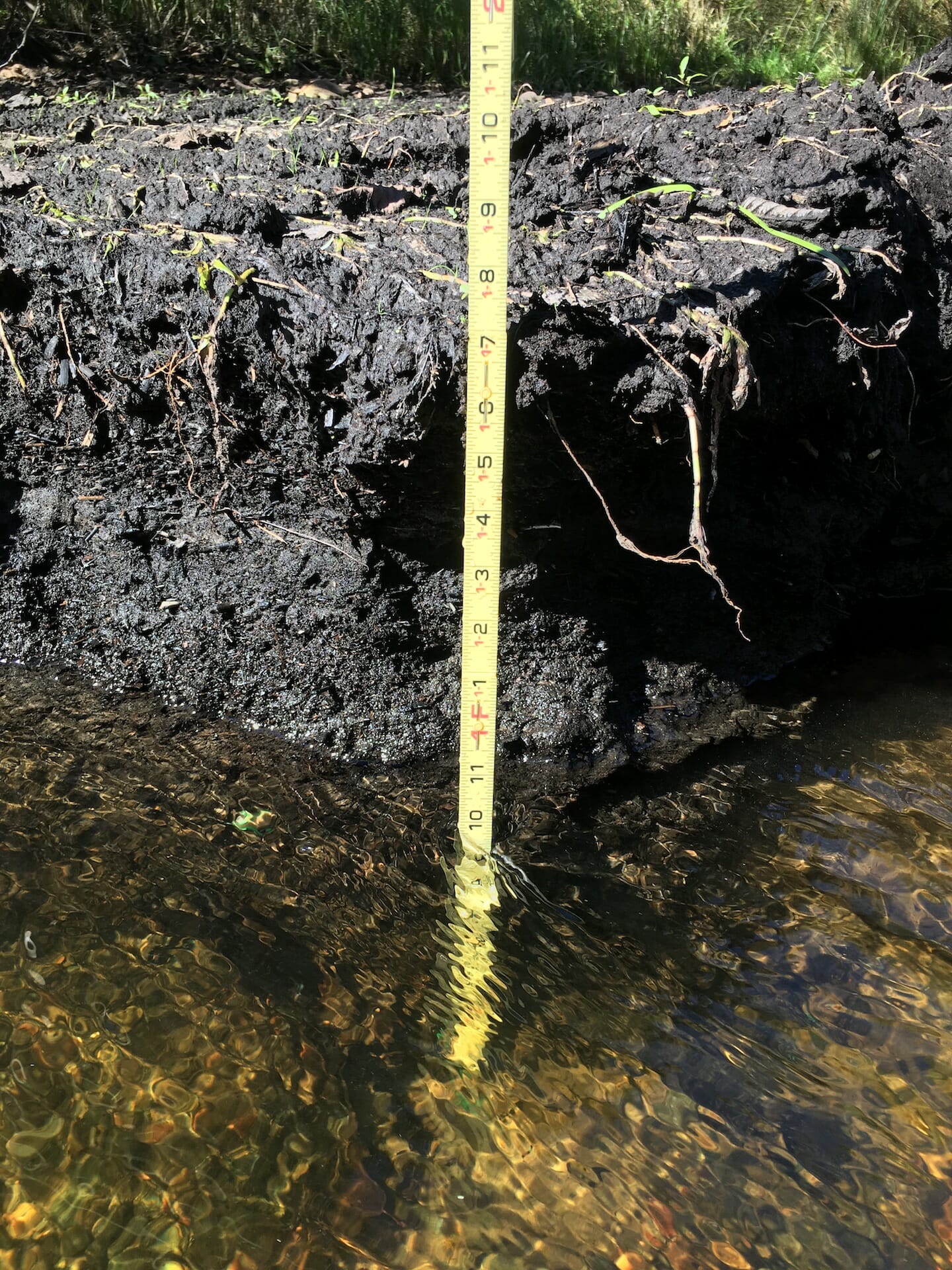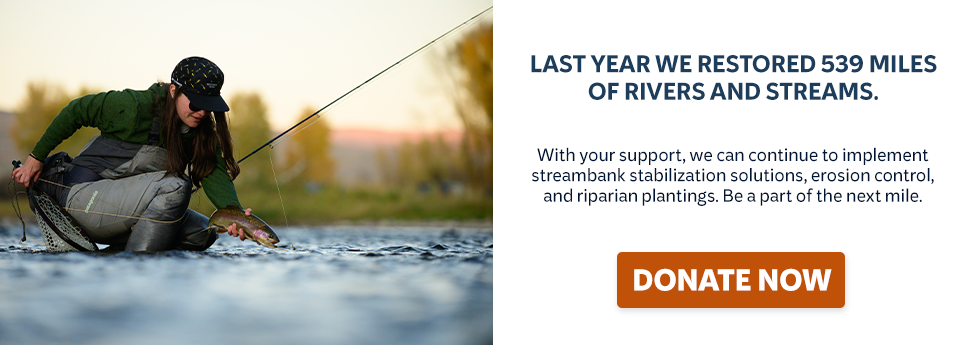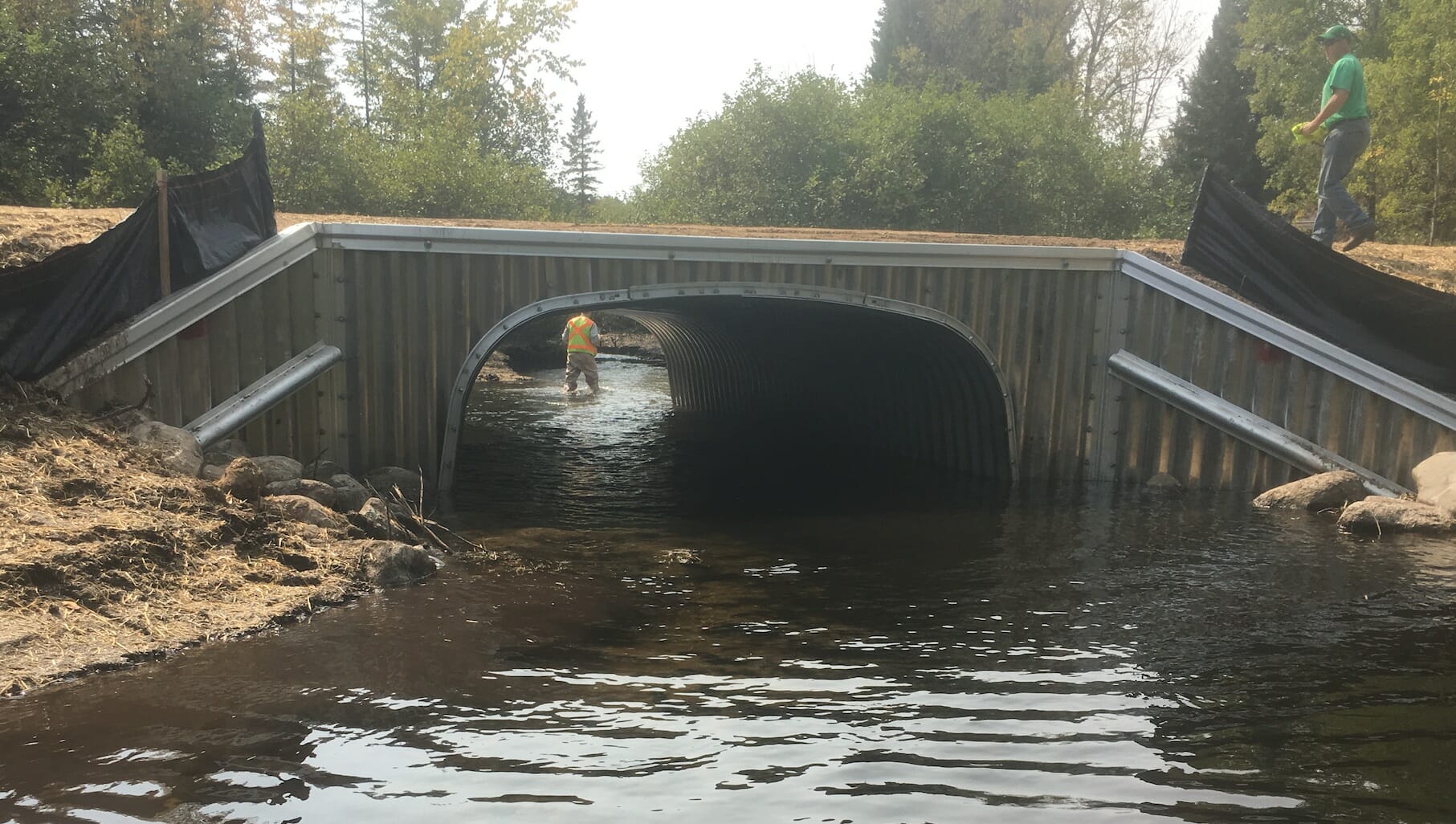By Laura MacFarland
In 2017, Trout Unlimited staff and volunteers helped to reconnect 42 miles of coldwater habitat within the Peshti
go River watershed in Northern Wisconsin, as part of TU’s Great Lakes Restoration Program.
In collaboration with the Forest Service and the Wisconsin Department of Natural Resources, 10 inadequate culverts were replaced with fish-friendly structures, such as the box culvert above on Spencer Creek. An additional road crossing located on private industrial forest was abandoned. In all, the projects eliminated 11 aquatic organism passage barriers and improved instream habitat.
Thanks to a grant from the National Fish and Wildlife Foundation and the ongoing support for the Great Lakes Restoration Initiative (GLRI), we will be continuing our efforts here in northern Wisconsin through 2019. Our objective for 2018 is to reconnect an additional 25 miles within the Peshtigo system through the replacement of five more culverts.
In addition to our culvert work, we are very excited to be a part of the North Branch Oconto Restoration Restoration Partnership. In 2018, we will be assisting to restore 2.6 miles of wild brook trout habitat through the heart of Wabeno. This will entail the removal of mill dams, a culvert replacement and instream habitat improvements.
Ongoing support from the Wisconsin Council and chapters, in the form of generous financial contributions and letters of support, have been critically important in this effort.
PROJECT SPOTLIGHT – Spencer Creek
Spencer Creek is a very important coldwater tributary to the Rat River. The limited trout population of Rat River, a larger tributary to the Peshtigo River, depends on cool-cold water tributaries such as Spencer Creek.
It is likely that Rat River trout historically used Spencer Creek for spawning, nursery, and rearing habitat and also as a refuge from warm water temps that routinely occur in the Rat River.
However, in recent decades, trout within the Rat River have been unable to access Spencer Creek due a culvert (below) that, like a water cannon, blasted water at high speeds from above the water’s surface.

Tom Moris, a local biologist at the USFS, had long recognized this culvert as a priority for replacement. Opening up the entire Spencer Creek system to trout migrations and movements would once again allow the seasonal and life history movements of trout and other species.
In 2017, Wild Rivers Trout Unlimited and Trout Unlimited National collaborated to secure a $50,000 Wisconsin Department of Natural Resources’ River Management grant which helped fund the replacement of a culvert located on Spencer Creek in the Town of Blackwell, in Forest County, Wisconsin.
The project was completed in September 2017 in partnership with the USFS and the Town of Blackwell, with additional funding from the National Fish and Wildlife Foundation.
Removal of this barrier reconnected the entire Spencer Creek coldwater system to trout and other aquatic organisms: 5 miles of the mainstem Spencer Creek and an additional 1.56 miles of Swan Creek.
While fish passage was the primary objective at this site we saw a great improvement in the instream habitat upstream and downstream of the site. By replacing the undersized and perched culvert, we eliminated the former impounding condition upstream of the road and restored natural river velocities and flow characteristics.
The replacement was implemented based on the design and specifications developed by Trout Unlimited’s stream restoration specialist.
The former 4-foot round corrugated metal pipe was replaced with 31.5-foot-long aluminum box culvert with a 14-foot, 1-inch span by 6-foot 2-inch rise.
The elevation of the culvert was lowered below the existing channel bottom. A 2-inch toe wall was placed to prevent scour.
Preliminary post-construction monitoring was conducted in Octoboer to document immediate changes in current velocity, water depth, silt depth and substrate type following the project.
Upstream of the culvert, we observed a dramatic reduction in the amount silt, revealing sand, gravel, and cobble; virtually no silt was observed within the channel. The average silt depth was reduced from 10 inches (below) to 0.004 inches.

The average width and depth of the channel were both reduced to natural conditions mimicking the upstream and downstream reference reaches.
Prior to the restoration, the velocity of water at the outlet of the culvert served as a barrier to aquatic organisms, flowing at a rate of 1.61 m/sec (5.28 ft/sec). Following the replacement, the velocity at the outlet of the culvert were .2 m/sec (.65 ft/sec), which is more consistent with the velocities found upstream and downstream of the crossing and allows fish to move through the structure easily.
Thanks to Bob Rice and the Wild Rivers Chapter helping to secure necessary funds for this project and to our partners at the Wisconsin Department of Natural Resources and US Forest Service. For more examples of our projects, please like and follow “Trout Unlimited – Great Lakes Stream Restoration” on Facebook. Here you will find additional photos, project updates, and how you can get involved on the ground.
Laura MacFarland manages Trout Unlimited’s Great Lakes Stream Restoration program. She is based in Wisconsin.



